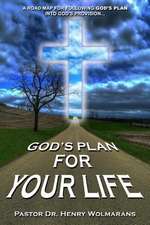The Gospel of St. John and Its Relation to the Other Gospels
Autor Rudolf Steiner, Stewart C. Easton Traducere de Maria St.Goaren Limba Engleză Paperback – 30 apr 1982
That was a trying time for my soul as I looked at Christianity. This period lasted from the time I left the Weimar work until I wrote my book "Christianity as Mystical Fact." These kinds of tests are obstacles, placed in one s path by destiny (or karma), and they must be overcome through spiritual development. In these talks, Rudolf Steiner offers his profound insights into the essential truths behind the Christ event, as well as the historic and prehistoric events on Earth and in the spiritual worlds leading up to the turning point in time. He shows that the ancient mysteries of the East, the Persians, the Egyptians, the Greeks, and the streams behind those impulses going back to Atlantis and Lemuria all lead to the event of Christ s incarnation and the Mystery of Golgotha, through which the Earth became the body of Christ. Further, Steiner talks about what those events mean for the future of humanity and the Earth.
"The Gospel of St. John and Its Relation to the Other Gospels" is an essential document in the literature of Christology and for understanding the central place of esoteric Christianity in Anthroposophy.
The essential topics discussed in these lectures: The Christians of St. John; the rebirth of the higher "I" in individuals and in humanity The living spiritual history; the leaders of humanity; the creative Word The transformation of Earth; the prototypes of created types; the servants of the Word The hierarchies of our solar system and the kingdoms of the Earth Human development during the incarnations of our Earth; the kingdom of the luciferic and ahrimanic spirits and the kingdom of the divine spiritual beings The Atlantean oracles; post-Atlantean sanctuaries of initiation; the baptism by John The baptism with water and the baptism with fire and spirit The Mysteries of initiation; rebirth through Jesus Christ The artistic composition of the Gospel of St. John; the climax of power in the signs and miracles Events at the baptism by John; Christ's mastery over the laws of the skeletal structure and the conquest of death The establishment of harmony in the inner forces of human beings through the Christ impulse; the connection between the ancient mysteries and the Gospels The decline of the ancient wisdom and its renewal through the Christ impulse; the significance of the Mystery of Golgotha for human evolution on Earth The cosmic significance of the Mystery of Golgotha; the conquest of death through the expulsion of the luciferic and ahrimanic influence; death as the bringer of life; the Earth becomes a new sun; the effects of the Christ light and its reflection in the Earth's periphery as a spiritual sphere; the Holy Spirit The Earth as the body of Christ and as a new center of light; the Last Supper as a preparation for mystical union with Christ; Paul, the apostle of the spiritually living Christ; the seven stages of Christian initiation; death as the seed of eternal "I" being; spirit knowledge is the fire of life "The Gospel of St. John and Its Relation to the Other Gospels" is a translation of "Das Johannes-Evangelium im Verhaltnis zu den drei anderen Evangelien, besonders zu dem Lukas-Evangelium" (GA 112)."
Preț: 169.69 lei
Nou
Puncte Express: 255
Preț estimativ în valută:
32.47€ • 33.99$ • 26.87£
32.47€ • 33.99$ • 26.87£
Carte disponibilă
Livrare economică 15-29 martie
Livrare express 01-07 martie pentru 72.58 lei
Preluare comenzi: 021 569.72.76
Specificații
ISBN-13: 9780880100144
ISBN-10: 0880100141
Pagini: 320
Dimensiuni: 140 x 216 x 18 mm
Greutate: 0.4 kg
Ediția:(Rev Translatio
Editura: Steiner Books
Locul publicării:United States
ISBN-10: 0880100141
Pagini: 320
Dimensiuni: 140 x 216 x 18 mm
Greutate: 0.4 kg
Ediția:(Rev Translatio
Editura: Steiner Books
Locul publicării:United States
Notă biografică
Rudolf Steiner (1861-1925) was born in the small village of Kraljevec, Austro-Hungarian Empire (now in Croatia), where he grew up. As a young man, he lived in Weimar and Berlin, where he became a well-published scientific, literary, and philosophical scholar, known especially for his work with Goethe's scientific writings. At the beginning of the twentieth century, he began to develop his early philosophical principles into an approach to systematic research into psychological and spiritual phenomena. Formally beginning his spiritual teaching career under the auspices of the Theosophical Society, Steiner came to use the term Anthroposophy (and spiritual science) for his philosophy, spiritual research, and findings. The influence of Steiner's multifaceted genius has led to innovative and holistic approaches in medicine, various therapies, philosophy, religious renewal, Waldorf education, education for special needs, threefold economics, biodynamic agriculture, Goethean science, architecture, and the arts of drama, speech, and eurythmy. In 1924, Rudolf Steiner founded the General Anthroposophical Society, which today has branches throughout the world. He died in Dornach, Switzerland.












